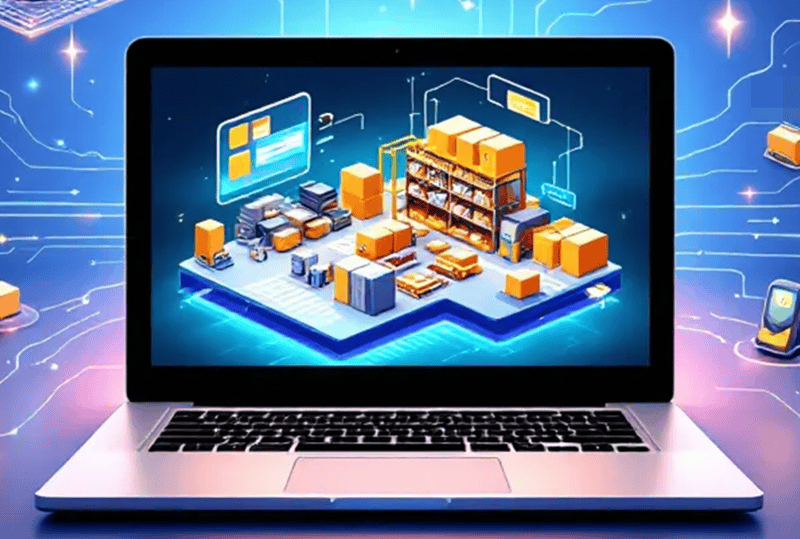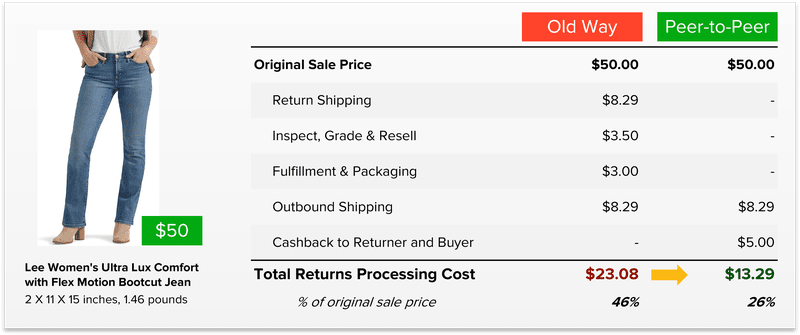Top 3PL Software Solutions for Your Warehouse Operations

Last updated on April 15, 2025

Running a warehouse isn’t just about stacking shelves and moving boxes, it’s about precision, efficiency, and keeping up with the fast-paced demands of modern commerce; which means having the right tools in place. That’s where 3PL software comes in. Whether you’re managing multiple clients, juggling inventory across warehouses, or optimizing shipping routes, a powerful 3PL solution can make all the difference. But not all software is created equal. The right 3PL software doesn’t just automate tasks it must optimize workflows, reduce errors, and seamlessly integrate with your entire supply chain. In this guide, we’ll break down the key features, benefits, and must-have integrations to help you find the perfect solution for your logistics operations. Let’s dive in!
Key Takeaways
- 3PL software boosts efficiency by automating warehouse operations, providing real-time tracking, and enhancing inventory management to reduce costs and errors.
- Key features of 3PL software include client management tools, real-time tracking, and user-friendly interfaces, which streamline logistics processes and improve customer satisfaction.
- Choosing the right 3PL software involves analyzing specific operational challenges, ensuring scalability, and verifying ease of use for employees to maximize efficiency and ROI.
Understanding 3PL Software
Third-party logistics (3PL) involves outsourcing logistics processes for ecommerce fulfillment, including inventory management, warehousing, and shipping. With the rise of ecommerce, the demand for efficient and reliable logistics solutions has skyrocketed. This is where 3PL software comes into play. This specialized software, also known as a 3PL warehouse management system (WMS), is designed to manage various aspects of logistics, including sales, marketing, operations, fulfillment, and finance.
A Warehouse Management System (WMS) is utilized to effectively manage and track nearly all activities inside the warehouse, including inventory management, shipping, receiving, picking, packing, and processing returns. Accurate data and insights from 3PL software enhance decision-making for clients, boosting productivity and efficiency in warehouse operations.
Cloud-based 3PL solutions offer scalability and flexibility, enabling logistics businesses to adapt their software usage as needed. This adaptability is crucial for managing multiple clients with different inventory, order, and reporting requirements. Overall, 3PL software streamlines logistics operations, cuts down manual effort, and minimizes errors, becoming essential for modern warehouse management.
Key Features of 3PL Software
The key features of 3PL software are designed to enhance the efficiency and effectiveness of logistics operations, providing stakeholders with full visibility into operational progress and challenges at any given point in time. These include client management tools, customer portals for monitoring inventory and order progress, and various inventory and warehouse management tools. Real-time tracking is vital, as it allows providers to monitor the location and condition of goods, significantly reducing delivery delays.
The key features of 3PL software include:
- Client management tools
- Customer portals for monitoring inventory and order progress
- Various inventory and warehouse management tools
- Real-time tracking, which allows providers to monitor the location and condition of goods, significantly reducing delivery delays.
Efficient inventory management in 3PL software is widely known to reduce warehousing expenses by up to 30% and enhance inventory accuracy by 20%. A robust 3PL WMS should include functionalities such as inventory management and control, picking, packing, and shipping, as well as advanced reporting tools. These functionalities streamline operations, boost accuracy, and reduce errors.
Integrated 3PL fulfillment software provides fast onboarding, real-time warehouse management, and billing automation. Automated route optimization reduces shipping costs, enhancing overall delivery efficiency while protecting margins. Additionally, Warehouse Management Systems (WMS) can enhance picking accuracy by 30-40%, resulting in fewer errors and improved operational efficiency.
A user-friendly interface ensures employees can easily navigate and use the software. An integrated Order Management System (OMS) can reduce order processing times by up to 60%, boosting service reliability. These key features collectively contribute to making 3PL software a powerful tool for managing logistics operations effectively.
Benefits of Using 3PL Software
A major benefit of using 3PL software is its cost-saving potential. Using a 3PL can lower order fulfillment costs compared to managing logistics in-house. Additionally, using 3PLs allows companies to avoid large capital investments in technology and warehouse facilities. This not only makes logistics more cost-effective but also converts fixed costs into variable costs based on transaction volumes.
Another crucial benefit of 3PL software is its time-saving capability. Automation of tasks such as billing and invoicing enhances accuracy and speed, facilitating the collection of timely payments and reducing manual efforts. Advanced reporting and analytics features help logistics providers make data-driven decisions, improving operational efficiencies by 10-15%. This allows logistics teams to concentrate on business growth instead of daily operational tasks.
Improved customer service is another advantage. 3PL software improves customer service by streamlining communications and keeping client costs down by minimizing mistakes during fulfillment and enabling faster returns (which accelerates turnaround to resale). Insights on sales trends provided by the software help optimize inventory levels and reduce overstock situations, which Sellers appreciate. Overall, the benefits of using 3PL software are many-fold, contributing to greater efficiency, cost savings, and improved customer satisfaction.
How to Choose the Right 3PL Software
Choosing the right 3PL software is a crucial decision that can significantly impact your warehouse operations. The first step is to identify specific operational challenges and tailor your software selection to address these needs. Understanding client needs is also necessary when selecting 3PL software. Research and shortlist software options that offer the necessary features and evaluate them based on their capabilities.
Conducting a pilot test with a small subset of data can help assess the usability and performance of the software. It is also important to analyze the return on investment by comparing software costs with expected efficiency improvements. Verify that the software is user-friendly and easy for employees to learn.
Scalability is another vital factor. The software should be able to scale with your business growth. Select a vendor that provides reliable customer support and stays up-to-date with technology and logistics industry trends. By considering these factors, you can choose a 3PL software solution that aligns with your business goals and enhances your warehouse operations.
Real-Time Inventory Management
Real-time inventory management is fundamental to efficient warehouse operations. 3PL software provides real-time updates on inventory levels and stock movements, supporting timely decision-making. This real-time visibility helps logistics providers streamline operations and improve overall efficiency. The ability to monitor inventory levels in real-time helps prevent stockouts, ensuring better product availability. By automating inventory management, 3PL software reduces manual entry and error rates.
Integrating artificial intelligence and machine learning in 3PL software further enhances operational efficiency by optimizing inventory management and demand forecasting. These technologies enable logistics providers to make data-driven decisions, enhancing inventory accuracy and customer satisfaction. Overall, real-time inventory management is key to maintaining efficiency and reducing operational costs in warehouse operations.
Enhancing Client Relationships with 3PL Software
Strong client relationships are essential for any logistics provider’s success. 3PL software allows the tracking of product flow, order management, and cost monitoring, providing clients with transparency and confidence in their outsourced logistics operations. Real-time shipment tracking builds trust by allowing clients to monitor their deliveries at any time, from anywhere. Such visibility and control boost client satisfaction and loyalty.
Proactive issue resolution through real-time tracking enhances the client experience by quickly allowing customers to address potential shipping problems. Timely communication about order tracking status helps manage client expectations and reduces anxiety related to delays. A strong Customer Relationship Management (CRM) system should be included for managing client interactions and boosting satisfaction and retention.
Tailored logistics solutions allow 3PL providers to meet differing client needs, appealing to a broader market of prospects. Automated customer service systems improve response times to client inquiries, boosting overall customer satisfaction. Combining advanced technology with personalized service, 3PL software helps providers cultivate strong, lasting client relationships.
Automation in 3PL Software
Automation is revolutionizing warehouse operations, boosting efficiency and reducing dependency on manual processes. 3PL software helps logistics managers concentrate on their main strengths by automating numerous repetitive supply chain functions. It covers tasks like generating and receiving documents, managing quality checks, and optimizing delivery routes.
Implementing automation in transportation management can optimize delivery routes, thereby lowering transportation expenses. 3PL software also boosts efficiency by automating tasks and streamlining processes, resulting in significant operational gains. These enhancements increase productivity and reduce operational costs.
Seamless integrations and optimized processes further enhance overall logistics performance. By automating various aspects of warehouse management, 3PL software allows logistics providers to focus on strategic initiatives and business growth. The impact of automation on logistics operations is profound, offering a competitive edge to those that embrace it.
Integrating 3PL Software with Existing Systems
Integrating 3PL software with your existing systems doesn’t have to be complicated, but it’s definitely something worth getting right. A smooth connection between different platforms helps keep data accurate and up to date while making everything run more efficiently. APIs play a big role here, allowing different systems to communicate and share information without a hitch.
If there’s no pre-built connection available, middleware solutions can step in to bridge the gap, offering a flexible way to link multiple applications. For businesses with very specific needs, custom integrations are an option, though they can be pricier. On the flip side, pre-built connections can save time and costs, but they might not offer as much flexibility.
For ecommerce businesses, integrating with 3PL software can speed up order processing by as much as 30%, which means happier customers and a more efficient workflow. Most shopping platforms already support these integrations, making the process easier than you might think. When everything works together seamlessly, your operations run smoother, and you get the most out of your 3PL software.
The Future of 3PL Software
The future of 3PL software looks incredibly promising, with the industry expected to hit $1.8 trillion by 2026. Technology is advancing fast, and innovations like warehouse robotics—think automated guided vehicles and robotic picking systems—are set to make logistics operations even more efficient. Artificial intelligence is also playing a bigger role, helping businesses fine-tune order batching and demand forecasting for better accuracy and smoother workflows.
Advanced analytics and reporting tools are making it easier to scale operations by offering valuable insights into performance metrics and future trends. Meanwhile, blockchain technology is enhancing transparency and security, giving companies real-time tracking capabilities while reducing fraud risks.
We’re also seeing a rise in micro-fulfillment centers, which are helping speed up last-mile delivery and shorten processing times, especially in urban areas. Plus, many 3PL providers are simplifying international shipping by streamlining customs and compliance. As logistics continues to evolve, staying ahead of the curve with cutting-edge technology and smart 3PL solutions will be key to staying competitive.
Summary
In the end, 3PL software is a game-changer for warehouse operations, helping businesses work smarter by improving efficiency, cutting costs, and keeping customers happy. Features like real-time tracking, automation, and seamless integrations make a huge difference in streamlining logistics and reducing errors. Finding the right 3PL software means understanding your business’s unique needs, comparing options, and ensuring it’s easy to use, scalable, and backed by solid customer support.
Looking ahead, the future of 3PL software is exciting, with AI, blockchain, and robotics leading the way. By embracing these technologies, logistics providers can stay competitive and keep up with the fast-paced world of e-commerce fulfillment. Choosing the right 3PL software isn’t just a smart move—it’s a key investment that can boost efficiency and fuel long-term business growth.
Frequently Asked Questions
What is third-party logistics (3PL)?
Third-party logistics (3PL) is all about outsourcing logistics tasks like inventory management and shipping to specialized providers. This way, businesses can concentrate on what they do best, while experts handle the complexities of logistics for them.
What are the key features to look for in 3PL software?
When choosing 3PL software, focus on client management tools, real-time tracking, inventory management, and integrated order systems to boost your logistics efficiency. A user-friendly interface is also crucial for seamless operations!
How does 3PL software enhance client relationships?
3PL software really boosts client relationships by offering real-time shipment tracking and timely communication, which builds trust and keeps everyone in the loop. Plus, with proactive issue resolution and tailored solutions, your customers feel valued and satisfied.
Why is real-time inventory management important in 3PL operations?
Real-time inventory management is vital in 3PL operations because it ensures visibility into stock levels and movements, helping avoid stockouts and overstock issues. This leads to better decision-making and improved efficiency overall.
What should be considered when choosing the right 3PL software?
When choosing 3PL software, it’s crucial to focus on your specific operational needs, essential features, and how well it can grow with your business. Don’t forget to test it out first and evaluate the potential ROI to ensure it’s the right fit for you.
How does mobile functionality benefit warehouse staff?
Mobile functionality helps warehouse staff by offering real-time inventory tracking and quick access to order processing, making operations smoother and less dependent on manual work. This ultimately boosts efficiency and saves time!

Up to 64% Lower Returns Processing Cost


 11 minutes
11 minutes